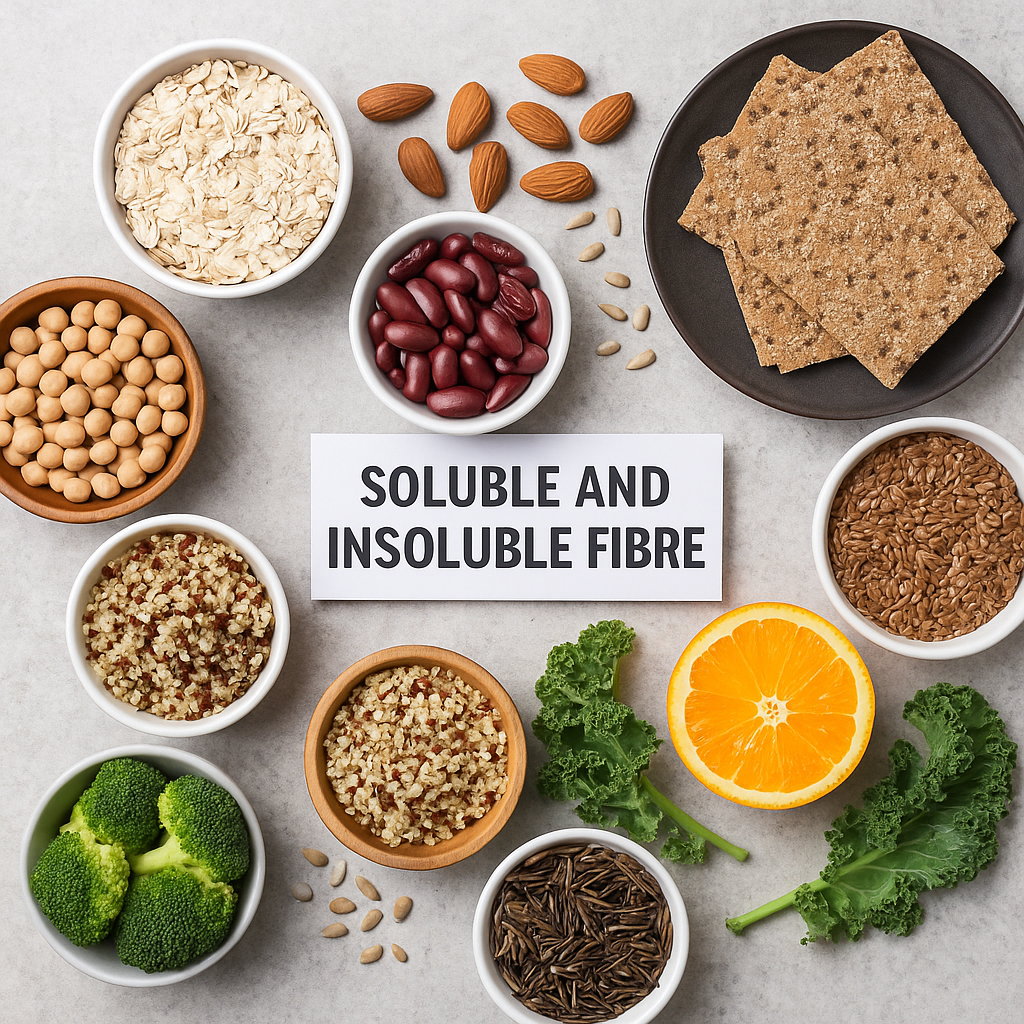If you live with diverticulitis, you’re constantly balancing on a dietary tightrope. On one side is the relief of a low-residue diet during a flare; on the other, the necessity of a high-fibre diet for prevention. Fibre tracking becomes part of daily life.
Navigating this transition is the hardest part of managing the condition, and simply aiming for “more fibre” isn’t safe enough. To truly prevent the next painful episode, you need to become skilled at fibre tracking.
Why? Because for diverticulitis sufferers, fibre is both the medicine and, if mismanaged, the poison. Keeping meticulous track of your intake is the key to maintaining a healthy, less-pressurised colon.
Why fibre is Non-Negotiable for Prevention
Diverticulosis (the condition of having pouches) turns into diverticulitis (the inflammation of those pouches) when something gets stuck, causing pressure and infection.
- The Job of fibre: fibre acts like a broom, adding bulk to the stool and making it softer and easier to pass. This reduces the strain your colon has to exert. Less straining means less pressure on the vulnerable diverticula.
- The Danger of Low Fibre: A consistent diet low in fibre leads to hard, dry stools and chronic constipation, which is a significant risk factor for developing flares.
The catch? When you’re already inflamed, high-fibre foods can worsen the irritation. This is why tracking your intake in a diverticulitis journal is vital for knowing when to ramp up and when to ease back.
The Two Critical Fibre Phases of Fibre Tracking
Managing diverticulitis means recognising and tracking the transition between these two distinct dietary phases:
1. Phase One: The Healing Phase (Low-Residue)
This phase occurs during a flare-up. The goal is to give your colon absolute rest. Tracking here means consciously lowering your fibre count, focusing on foods that leave minimal residue in the gut.
- What to Track: Aim for under 10 grams of fibre per day.
- Journal Focus: Note how quickly your pain subsides as you eliminate high-fibre foods. Track your stool consistency in your diverticulitis journal — you want soft, easy-to-pass stools, not diarrhoea or hard pebbles. Use the Bristol Stool Chart so your doctors have a common understanding of how good or bad things have been.
- Sample “Safe” Tracked Foods: Clear liquids, white rice, cooked, peeled vegetables, and lean protein.
2. Phase Two: The Prevention Phase (High-Fibre)
Once symptoms have resolved, the focus shifts to preventing the next attack. This transition needs to be gradual and tracked daily.
- What to Track: Slowly increase your fibre by 3 to 5 grams every few days, aiming for the recommended goal of 25 to 35 grams daily.
- Journal Focus: This is where you become a scientist. Log the exact type of fibre you introduce (soluble vs. insoluble) and its effect on your body. Do you tolerate beans but react badly to raw leafy greens? Your diverticulitis journal provides the answer.
Soluble vs. Insoluble
Fibre is one of the most essential yet misunderstood components of a gut-friendly diet—especially for those managing diverticulitis. Tracking your fibre intake isn’t just about hitting a daily number; it’s about understanding the types of fibre you consume and how they affect your digestive health.

Soluble fibre dissolves in water to form a gel-like substance, which slows digestion and helps stabilise blood sugar levels. It also binds to cholesterol and helps remove it from the body, supporting heart health. Familiar sources include oats, beans, lentils, apples, citrus fruits, and psyllium husk. For people prone to diverticulitis flare-ups, soluble fibre is particularly beneficial because it softens stool and promotes smoother bowel movements—reducing the strain on the colon.
Insoluble fibre, on the other hand, does not dissolve in water. It adds bulk to stool and speeds the passage of food through the digestive tract, helping prevent constipation. Found in foods like whole grains, nuts, seeds, and fibrous vegetables such as broccoli and kale, insoluble fibre plays a crucial role in maintaining regularity. However, during an active diverticulitis episode, it may need to be limited temporarily to prevent irritation.
The Fibre Tracking Deep Dive
Effective fibre tracking through your diverticulitis journal means being mindful of both types in your meals. Apps, journals, or simple checklists can help you balance soluble and insoluble sources throughout the day. Start slowly if you’re increasing your intake, allowing your gut to adjust, and always stay well hydrated to support fibre’s natural movement through the intestines.
By taking a data-driven approach to fibre tracking, you can identify which foods your body tolerates best, prevent flare-ups, and maintain long-term digestive stability—turning fibre from a dietary afterthought into a cornerstone of gut resilience.
| Fibre Type | What it Does | Examples | Why Track It |
| Soluble | Dissolves in water to form a gel; slows digestion. | Oats, applesauce, bananas, psyllium husk. | Generally gentler on the inflamed gut. Often, the first type to re-introduce. |
| Insoluble | Adds bulk to the stool; speeds passage through the gut. | Whole grains, skins of fruits/vegetables, nuts, and seeds. | Essential for long-term prevention but can be harsher during recovery. Tracking small amounts is crucial here. |
Tracking Tips to Avoid a Flare-Up
- Read Labels Carefully: Don’t guess your intake. Look for the “Dietary fibre” line on nutrition labels and record the exact number of grams per serving in your journal.
- Hydration Check: fibre cannot do its job without water. Always track your daily water intake (aim for over 1800 ml). If you increase your fibre intake without increasing your water intake, you risk blockages and flares.
- Note “fibre Sources”: Instead of just writing “apple,” write “apple (skin on, 4g insoluble)” to clearly track which type of fibre you are consuming.
By diligently tracking your fibre intake — both during a flare and in preventive management — you stop shooting in the dark. You gain the power to keep your colon healthy and significantly reduce your reliance on emergency hospital visits.
